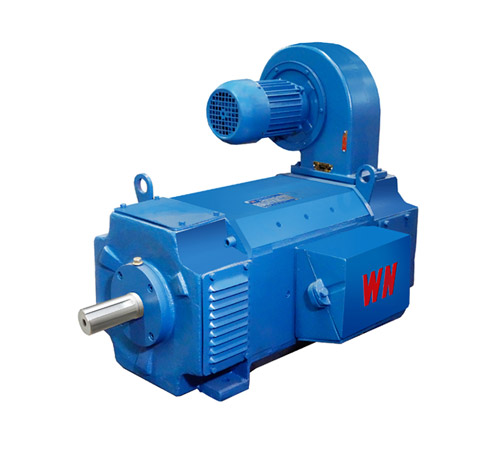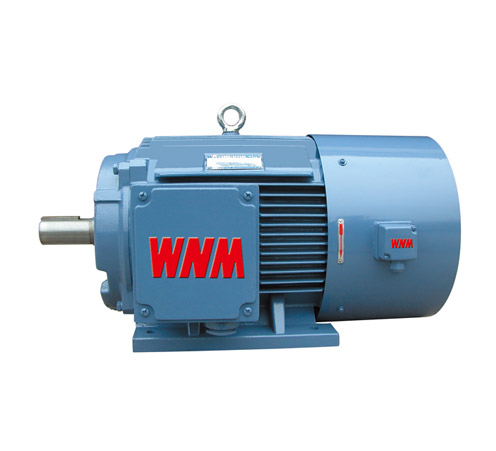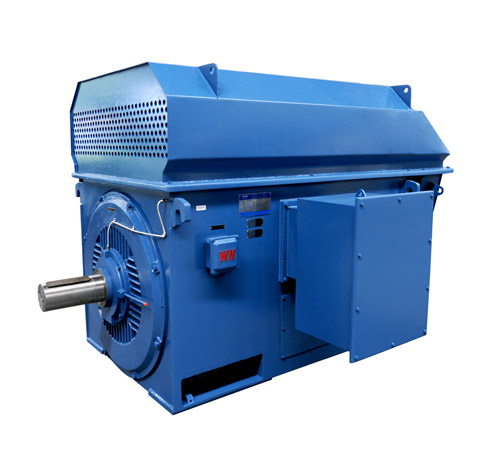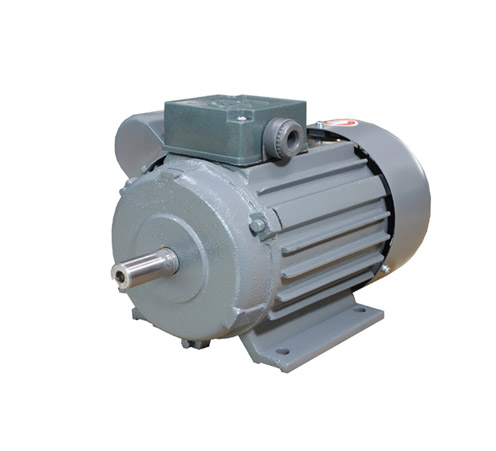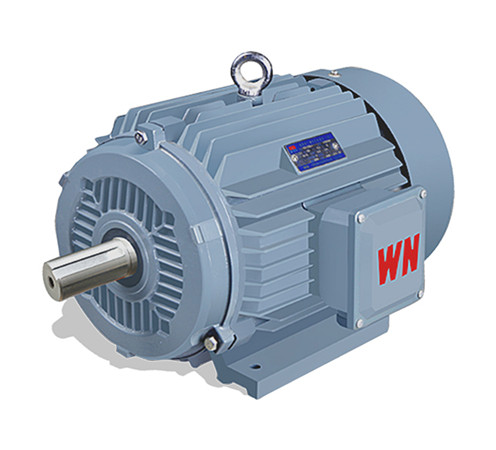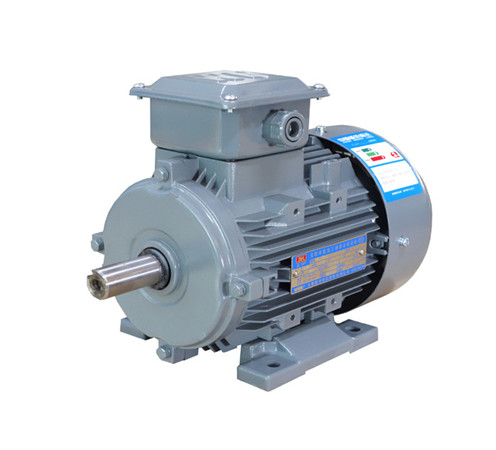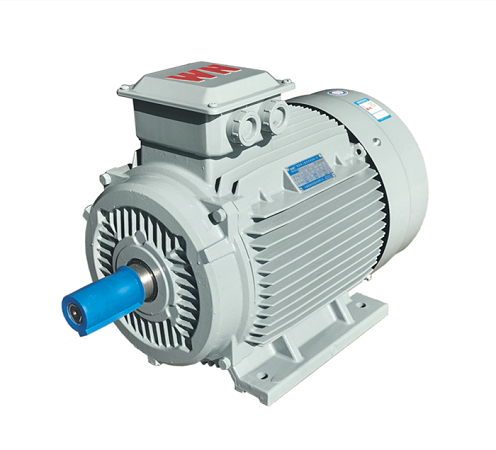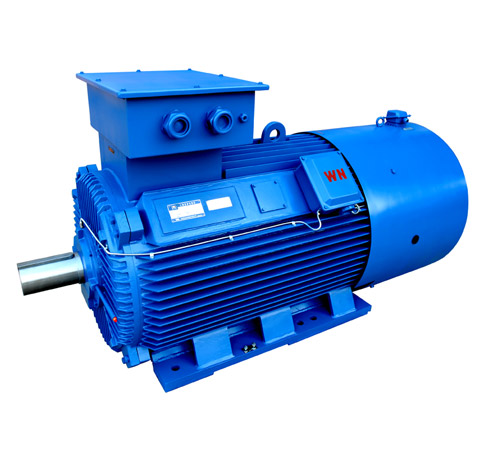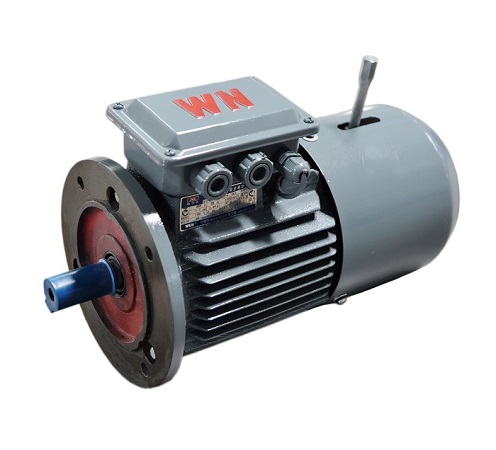Recommended Products
- Z4 Series DC Motors
- * Frame sizes: 100-450 * Rated output: 1.5-600kW * Insulation class: F * Voltage:160V / 440V * Duty cycle: S1 * Excitation mode: Separate excitation * Rotation speed: 3000,1500,1000,750,600,500,400,300,200r/min
- YVF2 Series Frequency Variable Speed Regulation Motors
- * Frame sizes: 80 to 355
* Rated output: 0.18 to 375kW
* Insulation class: F
* Voltage: 380V
* Efficiency levels: IE1
* Frequency range for 2P:
(3) 5-100Hz (frame size 80-250)
(3) 5-70Hz (frame size 280)
(3) 5-60Hz (frame size 315-355)
* Frequency range for 4, 6, 8, 10P: (3) 5-100Hz- YKK Series High Voltage Three Phase Induction Motors
- * Frame sizes: 355-1000 * Rated output: 185-8000kW * Insulation class: F * Degree of protection: IP54 /IP55 * Enclosure: IC611 * Mounting: Horizontal * Rotor: Squirrel cage * Bearing: Rolling bearing or sleeve bearing * Voltage: 6kV, 10kV * Efficiency: IE1 & IE2 & IE3
- YC Series Capacitor Start & Run Induction Motors
- * Frame sizes: 71 to 132 * Rated output: 0.12 to 3.7kW * Voltage: 220V,110V/220V, 110V, 240V * Frequency: 50Hz or 60Hz * Duty cycle: S1 * Insulation class: B / F * Number of poles: 2,4,6
- YX3 Series IE2 high efficiency Three phase induction motors
- * Frame sizes: 80 to 355
* Rated output: 0.18 to 375kW
* Voltage: 380V
* Frequency: 50Hz or 60Hz
* Number of poles: 2, 4, 6, 8,10,12
* Efficiency levels: IE2
* Duty Cycle: S1
* Enclosure: IC411 - TEFC
* Insulation class: F
* Degree of protection: IP56 / IP65- YXL Series IE2 High Efficiency Aluminum Three Phase Induction Motors
- * Frame sizes:63 to 160
* Rated output: 0.12 to 18.5kW
* Voltage: 380V
* Frequency: 50Hz or 60Hz
* Number of poles: 2, 4, 6, 8
* Efficiency levels: IE2
* Duty Cycle: S1
* Enclosure: IC411 – TEFC
* Insulation class: F
* Degree of protection: IP55- YE3 Series IE3 Super high Efficiency Three phase induction motors
- * Frame sizes: 63 to 355
* Rated output: 0.12 to 400kW
* Voltage: 380V
* Frequency: 50Hz or 60Hz
* Number of poles: 2, 4, 6, 8,10
* Efficiency levels: IE3
* Duty Cycle: S1
* Enclosure: IC411 - TEFC
* Insulation class: F
* Degree of protection: IP56 / IP65
- YLVF Series low-voltage high-power inverter three-phase asynchronous motor
- * Frame sizes: 400 to 450 * Rated output: 185 to 800kW * Insulation class: F * Voltage: 380V * Frequency range for 2P: (3) 5-60Hz (frame size 400-450) * Frequency range for 4, 6, 8, 10P: (3) 5-100Hz
Top articles
Latest articles
- We have received Provincial Honors
- ISO Certification Re-evaluation
- Anhui Province industrial boutiques
- China Top 500 Machinery
- National May Day Labor Medal
- Chinese New Year
- Top 100 Comprehensive Manufacturing Enterprises of Private Enterprises in Anhui Province in 2023
- IE4 efficiency Explosion-proof motor has successfully passed the national supervision and random inspection
- Welcome new people to join Wannan Motor
- Wannan Motor successfully participated in EASA Fair
Your browsing history

What is the difference between an AC motor and a DC motor?
While both A.C. and D.C. motors serve the same function of converting electrical energy into mechanical energy, they are powered, constructed and controlled differently. The most basic difference is the power source. A.C. motors are powered from alternating current (A.C.) while D.C. motors are powered from direct current (D.C.), such as batteries, D.C. power supplies or an AC-to-DC power converter. D.C wound field motors are constructed with brushes and a commutator, which add to the maintenance, limit the speed and usually reduce the life expectancy of brushed D.C. motors. A.C. induction motors do not use brushes; they are very rugged and have long life expectancies. The final basic difference is speed control. The speed of a D.C. motor is controlled by varying the armature winding’s current while the speed of an A.C. motor is controlled by varying the frequency, which is commonly done with an adjustable frequency drive control.



